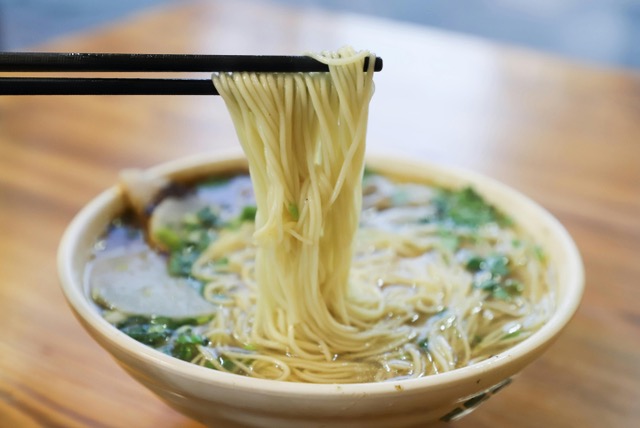Ramen - From humble origins to global icon
The Rich History and Nutritional Value of Ramen
5/5/2024

Ramen, a beloved staple in Asian cuisine, has transcended its humble origins to become a worldwide culinary sensation. Originating in China and later evolving in Japan, this versatile dish has captured the hearts and taste buds of millions around the globe. From its rich history to its diverse ingredients and growing popularity in Western countries, ramen is much more than just a bowl of noodles—it's a cultural phenomenon. In this article, we'll delve into the fascinating journey of ramen, explore its nutritional benefits, discuss its impact on health, and consider the debate over whether it should be all plant-based.
The History of Ramen:
Ramen's story begins in China, where it was introduced by Chinese immigrants in the late 19th century. Originally known as "lamian," meaning hand-pulled noodles, this early form of ramen consisted of wheat noodles served in broth. However, it wasn't until the 20th century that ramen underwent significant transformations, particularly in Japan.
In Japan, ramen evolved into a culinary art form, with regional variations emerging across the country. One of the most significant milestones in ramen history occurred after World War II when instant ramen was invented by Momofuku Ando in 1958. This groundbreaking innovation revolutionized the way ramen was consumed, making it convenient and accessible to people worldwide.
Over the years, ramen has continued to evolve, with chefs experimenting with different broths, toppings, and noodle varieties. Today, ramen shops can be found in almost every corner of the globe, each offering its unique spin on this beloved dish.
Ingredients and Nutritional Value:
While ramen is often associated with comfort food, it also boasts several nutritional benefits. A typical bowl of ramen consists of four main components: noodles, broth, protein, and toppings.
Noodles:
Ramen noodles are typically made from wheat flour, water, salt, and an alkaline mineral water called kansui, which gives them their characteristic texture and yellow color. While ramen noodles are high in carbohydrates, they are also a good source of energy and provide essential nutrients like iron and B vitamins.
Broth:
The broth forms the heart of ramen and can vary widely in flavor and complexity. Traditional broths include tonkotsu (pork bone), shoyu (soy sauce), miso (fermented soybean paste), and shio (salt). Each type of broth offers its unique nutritional profile, with some being richer in protein and collagen than others.
Protein:
Protein in ramen typically comes from ingredients like sliced pork (chashu), chicken, tofu, or seafood. These protein sources not only add flavor and texture to the dish but also provide essential amino acids necessary for muscle repair and growth.
Toppings:
Ramen toppings range from simple garnishes like green onions and nori (seaweed) to more elaborate additions like soft-boiled eggs, bamboo shoots, and mushrooms. These toppings not only enhance the visual appeal of the dish but also contribute additional nutrients like vitamins, minerals, and antioxidants.
Overall, while ramen can be high in sodium and calories, it can also be a balanced and nutritious meal when prepared with wholesome ingredients and consumed in moderation.
Ramen's Global Expansion:
In recent years, ramen has experienced a surge in popularity outside of Asia, particularly in Western countries. This global fascination with ramen can be attributed to several factors, including its delicious flavor profile, cultural appeal, and versatility.
In the United States, ramen has evolved from a cheap college staple to a gourmet delicacy, with ramen shops popping up in major cities across the country. Chefs and food enthusiasts alike have embraced ramen, experimenting with innovative flavor combinations and techniques to create unique culinary experiences.
Similarly, in Europe, ramen has found a dedicated following, with cities like London and Berlin boasting vibrant ramen scenes. European chefs have embraced ramen's adaptability, incorporating local ingredients and culinary traditions into their recipes while staying true to the dish's Japanese roots.
However, alongside its global expansion, ramen has also faced criticism for its perceived health detriments, particularly regarding its high sodium content and reliance on processed ingredients in instant varieties.
The Plant-Based Debate:
As the demand for plant-based foods continues to rise, some have questioned whether ramen should be all plant-based to align with modern dietary preferences and sustainability goals.
Advocates for plant-based ramen argue that it offers numerous health benefits, including lower cholesterol, reduced risk of chronic diseases, and a lighter environmental footprint compared to meat-based options. Plant-based ramen can feature ingredients like tofu, mushrooms, seaweed, and vegetable broth, offering a flavorful and nutritious alternative to traditional meat-based varieties.
However, opponents of the plant-based movement argue that meat and seafood are integral components of traditional ramen recipes, contributing essential nutrients like protein and omega-3 fatty acids. They also contend that plant-based ramen may lack the depth of flavor and richness associated with traditional broths made from animal bones and collagen-rich cuts of meat.
Ultimately, the debate over whether ramen should be all plant-based reflects broader discussions surrounding food culture, health, and sustainability. While plant-based options offer numerous benefits, they must coexist alongside traditional varieties to preserve the diversity and heritage of ramen cuisine.
Ramen's journey from its origins in China to its global prominence today is a testament to its enduring appeal and adaptability. As a beloved comfort food enjoyed by people of all ages and backgrounds, ramen continues to captivate the culinary world with its rich flavors, diverse ingredients, and cultural significance.
Whether enjoyed in a bustling ramen shop in Tokyo, a trendy noodle bar in New York City, or homemade in kitchens around the world, ramen remains a symbol of culinary creativity and gastronomic delight. As we continue to explore the endless possibilities of this iconic dish, one thing is certain: the story of ramen is far from over, and its legacy will continue to evolve for generations to come.






